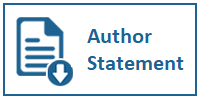Muslim Sosial Dalam Dua Film Nurman Hakim
DOI:
https://doi.org/10.31937/ultimart.v6i1.368Abstract
Sejak dirilisnya film Al-Kautsar (1975), film bercorak Islam mulai tumbuh subur di Indonesia dengan dipuncaki oleh kejayaan film-film Rhoma Irama yang menggabungkan dakwah Islam dan musik dangdut . Setelah Reformasi 1998 dan pasca bangun kembalinya Industri film Indonesia, film Islam kembali tumbuh dengan dipelopori oleh suksesnya Ayat-Ayat Cinta (2005) di pasaran. Beberapa penelitian terdahulu seperti Terdapat perbedaan corak antara film-film Islam sebelum 1998 dan setelah 1998. Sebelum 1998, film-film dakwah senantiasa menggunakan Islam sebagai alat mencapai kemaslahatan sosial, sementara setelahnya, film-film Islam cenderung individualis. Makalah ini memeriksa kembali dikotomi yang sudah diba- ngun ini dengan mendeteksi jejak-jejak konseptualisasi muslim sosial dalam film-film Islam masa kini
Key words : film Islam, film dakwah, pemberdayaan sosial, individualisme, Orde Baru, pasca-Orde Baru/pasca-reformasi.
Downloads
Downloads
Published
How to Cite
Issue
Section
License
Authors retain copyright and grant the journal right of first publication with the work simultaneously licensed under a Creative Commons Attribution-ShareAlike International License (CC-BY-SA 4.0) that allows others to share the work with an acknowledgement of the work's authorship and initial publication in this journal.
Authors are able to enter into separate, additional contractual arrangements for the non-exclusive distribution of the journal's published version of the work (e.g., post it to an institutional repository or publish it in a book), with an acknowledgement of its initial publication in this journal.
Copyright without Restrictions
The journal permits the author(s) to hold the copyright without restrictions and will hold distributing rights without limitations.
The submitted papers are assumed to contain no proprietary material unprotected by patent or patent application; responsibility for technical content and for protection of proprietary material rests solely with the author(s) and their organizations and is not the responsibility of the Ultimart: Jurnal Komunikasi Visual or its Editorial Staff. The main (first/corresponding) author is responsible for ensuring that the article has been seen and approved by all the other authors. It is the responsibility of the author to obtain all necessary copyright release permissions for the use of any copyrighted materials in the manuscript prior to the submission.














